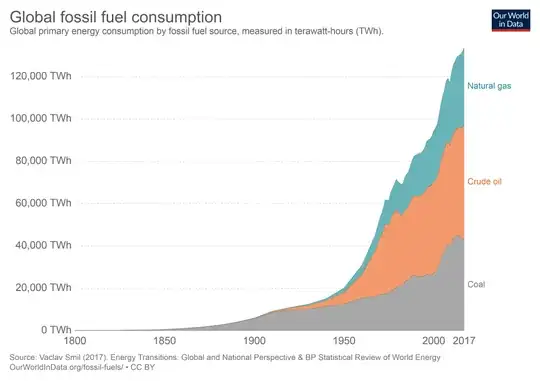This recent claim appeared on Twitter:
If you are 29, you’ve been alive when half of all the fossil fuels ever burned throughout all of human history have been burned
The source appears to be an article in PeakProsperity.com. The source makes the claim this way (my emphasis):
Fossil fuel energy is responsible for providing every creature comfort and material abundance in your life and it’s has been growing exponentially for your entire life.
Here’s the brain buster. Squint at that chart carefully and you’ll see that fully half of all the fossil fuels ever burned throughout all of history have been burned since 1990.
The basis appears to be this chart:
The specific numbers seem to come from that chart but it only plots 3 data points and seems to fit them to an exponential. The annual chart doesn't look like this and certainly doesn't look exponential (as some other charts the source includes make clear whiteout any explanation as to why this chart looks different).
So is current growth in fossil fuel use growing exponentially? And have we burned half of all the fossil fuels used over history since 1990?

